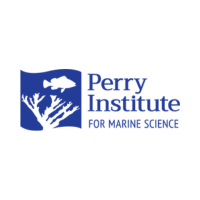Pillar Coral Restoration with The Perry Institute for Marine Science - Andros
DISCOVERY Yacht Ammonite
Andros, Bahamas
February 1 - 8, 2025
Program Overview
The impact of Stony Coral Tissue Loss Disease (SCTLD) varies by species, with highly susceptible species more likely to suffer reproductive isolation and local and/or regional extinction. Some of these species at higher risk of extinction include pillar coral, maze coral, flower coral, and elliptical coral. Particularly, the pillar coral (Dendrogyra cylindrus), considered an iconic Caribbean species, is typically uncommon but found in oceanic waters of the Caribbean. It is not found in areas with high sedimentation influence (e.g., continental reefs of Colombia and Venezuela) and is the only species of its genus. Its populations have decreased since the early 2000s due to multiple factors, including high-thermal bleaching events and the outbreak of a disease known as white plague. However, the impact of SCTLD has been catastrophic for this species. It is already extinct in the wild in Florida, and regional extinction is very likely . SCTLD spreads rapidly within a pillar coral colony, developing multiple lesions and killing a medium-sized colony, that took decades to grow, in a matter of weeks. To save this species in Florida, rescue efforts have been implemented, involving the collection of fragments from as many different (and remaining) coral colonies (genotypes) to keep them in land-based facilities and/or underwater offshore nurseries.
Application
While PIMS has been committed to diagnosing and treating SCTLD since 2019, we are at a critical point where an expanded, country-wide response effort is paramount to build and coordinate the surge capacity to comprehensively assess and treat this insidious disease. In the last year, we have been expanding our current program to a national scale by conducting training, undertaking scientific research, and deploying proven treatment protocols to prevent the spread of this disease and reduce its impact in areas where it has already gained a foothold. In addition, we have identified some necessities to ensure the future of Bahamian reefs, including (a) maintaining antibiotic treatment of SCTLD-affected highly susceptible coral colonies in prioritized reefs around The Bahamas, (b) having restoration projects to start understanding which methods would be best to accelerate coral restoration in The Bahamas as SCTLD becomes endemic (and with the occurrence of marine heat waves), and (c) saving coral species that are likely to go extinct due to SCTLD in biosecure rescue facilities.
Expedition Summary
From February 1 - 8, 2025, SeaKeepers assisted The Perry Institute for Marine Science (PIMS) on a research expedition in Andros, Bahamas. Onboard DISCOVERY Yacht Ammonite, the PIMS team sampled corals from 22 reefs, with samples spanning over 14 genotypes from 4 different species, with a focus on pillar corals (Dendrogyra cylindrus). These coral fragments were epoxied to tiles, labeled, and kept alive for the duration of the expedition in specialized holding tanks. Finally, these fragments were then transferred to a nursery just off of New Providence, Bahamas.
Location
Andros, Bahamas
Duration of Project
Ongoing since September of 2024
Leadership
Research Team
- Dr. Valeria Pizarro
- Taylor Walters
- Juliana Vanegas
- Max Turnquest



You must be logged in to post a comment.